Resources
Datasheet: http://www.vintagecomputer.net/fjkraan/comp/qx10/doc/nec7220.pdf
This is best used for designing a circuit with the uPD7220 and for understanding how to initialize and draw with it.
Programming Manual? : http://www.vintagecomputer.net/fjkraan/comp/qx10/doc/nec7220.pdf
This will explain how to send commands and generally how the CPU to uPD7220 interface works.
My Z80 code: https://github.com/NuclearManD/z80-code/blob/master/G00nOS/upd7220.z80
This is the graphics driver I am writing for my Z80 computer. It's good example code, but it currently has numerous limitations, so look at the arduino sketch I uploaded to this project as well.
Why?
I want a graphics card for my Z80 computer so it can operate completely independently, as in, without a serial monitor.
I don't want to use a propeller chip or other powerful microcontroller because those chips don't go with the rest of my Z80 computer. Besides, something about this design just feels really... pure, I suppose. Clean.
NOTE: The information provided in this details section is very condensed. There is much, much more to be understood. I recommend STUDYING the documents I linked and uploaded. The following information is just a brief overview.
How does the hardware work?
The uPD7220 generates VSYNC, HSYNC, and BLANK signals. It generates a few other signals for the memory interface, but these must be interpreted. The uPD7220 address and data lines share a bus, so the address has to be latched. Also, to write to memory, there are special cycles which require external hardware to generate a write enable.
There are two clocks. The pixel clock, which is currently 8Mhz, is used to output pixels. The uPD7220 takes lower frequencies, so the pixel clock is halved to make the 2xWCLK clock, which is sent to the uPD7220.
The uPD7220 reads the pixel data onto the data bus, where it is latched every fourth pixel clock rising edge. The shift registers output pixel data while the uPD7220 prepares for the next set of pixels.
The port which goes to the system microprocessor is directly connected to the uPD7220, except for two OR gates which generate the WE and RD signals.
How does the software work?
There are two ports that can be written/read on the uPD7220:
| READ | WRITE | |
| 0 | Status register | Parameter load |
| 1 | Data to CPU FIFO | Command load |
Before each write, the status register FIFO full flag must be checked first. If the FIFO is full, then a write will create undefined behaviour.
The uPD7220 must be initialized properly first. If it is not initiallized right, then random commands will crash it when it is least expected. These commands all must be used in initialization:
0x00 : reset (followed by graphics parameters)
0x47 : pitch (aka tell the GDC the number of horizontal words there are per line)
0x70 : set up PRAM so drawing operations work
0x4B : CCHAR : set up character parameters.
0x46 : set the zoom. Otherwise zoom may be random.
0x6B : start the display! YEET!
 Dylan Brophy
Dylan Brophy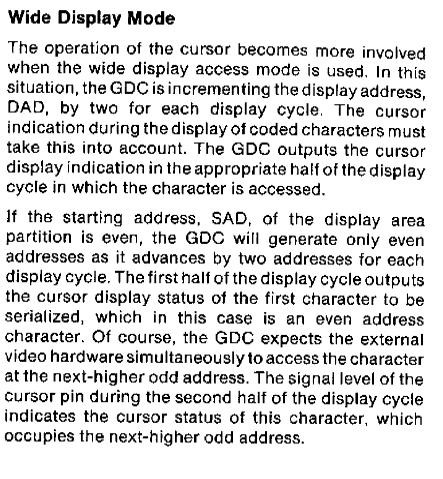
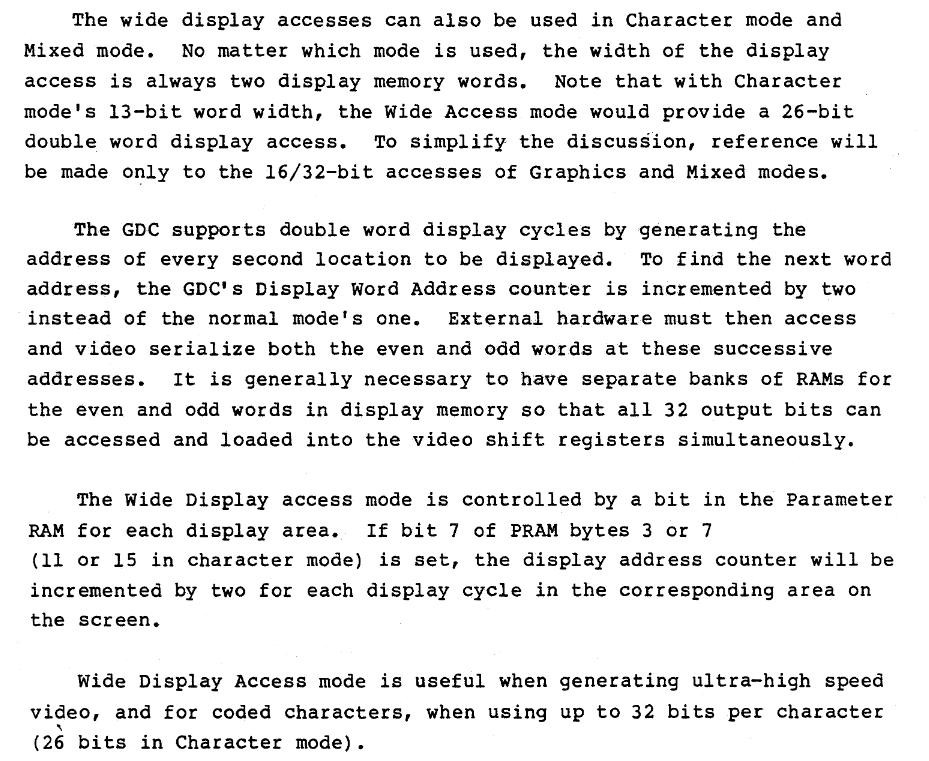 As it turns out, I don't think I can get it to add 4 instead of just adding two as described above; this limits my maximum clock speed to 24Mhz (32Mhz on the faster Z7220), so the maximum resolution would be limited by this. On the other hand, the uPD7220 supports interlacing, so I might be able to push out a higher resolution that way. Without interlacing under this config, I can't even get to 640x480, but with interlacing I can get at least to 720x480. I'll have to play with the settings.
As it turns out, I don't think I can get it to add 4 instead of just adding two as described above; this limits my maximum clock speed to 24Mhz (32Mhz on the faster Z7220), so the maximum resolution would be limited by this. On the other hand, the uPD7220 supports interlacing, so I might be able to push out a higher resolution that way. Without interlacing under this config, I can't even get to 640x480, but with interlacing I can get at least to 720x480. I'll have to play with the settings.

 As a bonus, I'm including a timing diagram from the datasheet so it is easier to find later:
As a bonus, I'm including a timing diagram from the datasheet so it is easier to find later: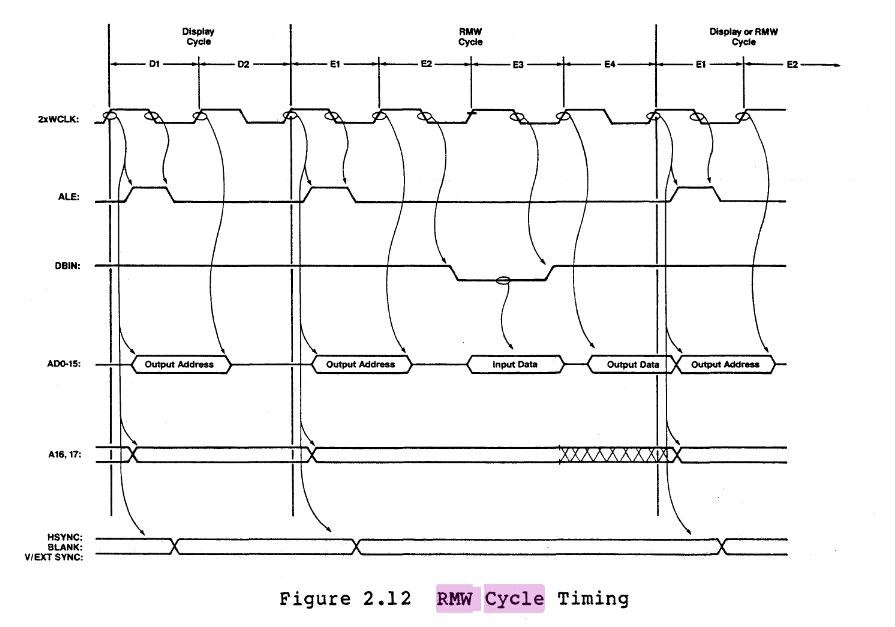 This image details the cycles of various uPD7220 memory accesses, and is super useful for designing the memory control logic.
This image details the cycles of various uPD7220 memory accesses, and is super useful for designing the memory control logic.

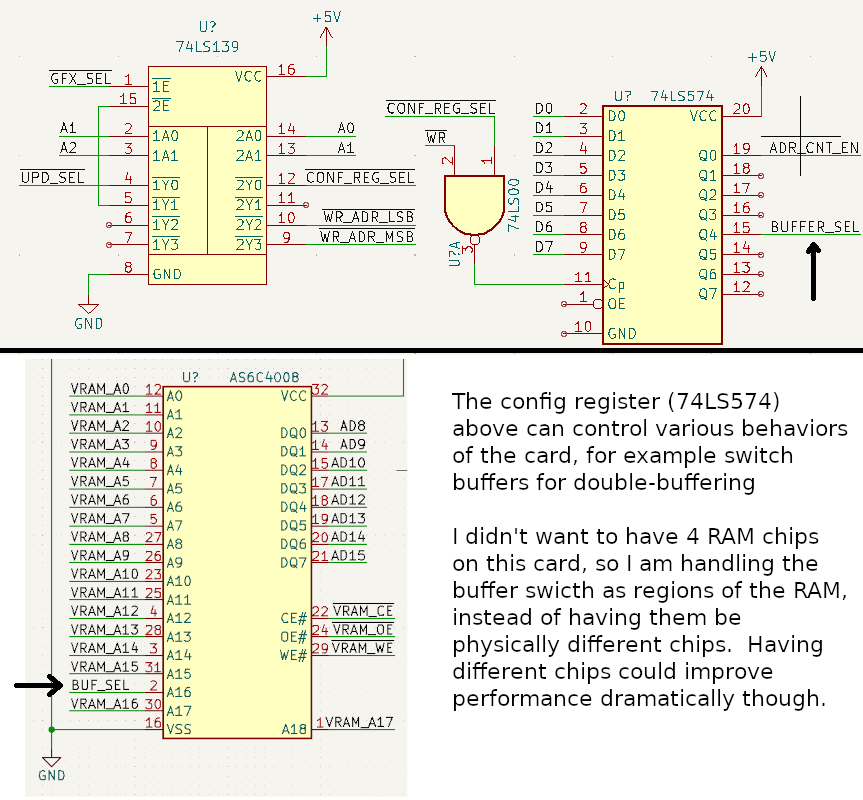 I'm not a huge fan of the old board's low resolution. I want at least 640x480, if not higher. Adding more memory for this is quite easy, and in the new schematic this is already handled - the hard part is getting the clock speeds high enough. The uPD7220 can clock at 6Mhz, and the current card gets this by dividing it out of a 12Mhz clock. With a Z7220 the clock is a bit higher, 8Mhz and 16Mhz respectively, but this is nowhere near the pixel bandwidth needed for higher resolutions. My solution to this will be to divide the uPD7220's clock one or two times so we can get 24Mhz or 48Mhz pixel clocks on a uPD7220. That should allow us to get way better resolutions:
I'm not a huge fan of the old board's low resolution. I want at least 640x480, if not higher. Adding more memory for this is quite easy, and in the new schematic this is already handled - the hard part is getting the clock speeds high enough. The uPD7220 can clock at 6Mhz, and the current card gets this by dividing it out of a 12Mhz clock. With a Z7220 the clock is a bit higher, 8Mhz and 16Mhz respectively, but this is nowhere near the pixel bandwidth needed for higher resolutions. My solution to this will be to divide the uPD7220's clock one or two times so we can get 24Mhz or 48Mhz pixel clocks on a uPD7220. That should allow us to get way better resolutions: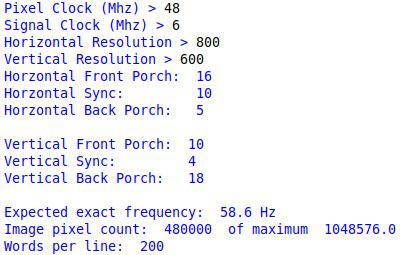
 Anyway, I have more stuff to figure out with the board. If any of you have good ideas on the clocks and loading twice the pixels from RAM, let me know :)
Anyway, I have more stuff to figure out with the board. If any of you have good ideas on the clocks and loading twice the pixels from RAM, let me know :)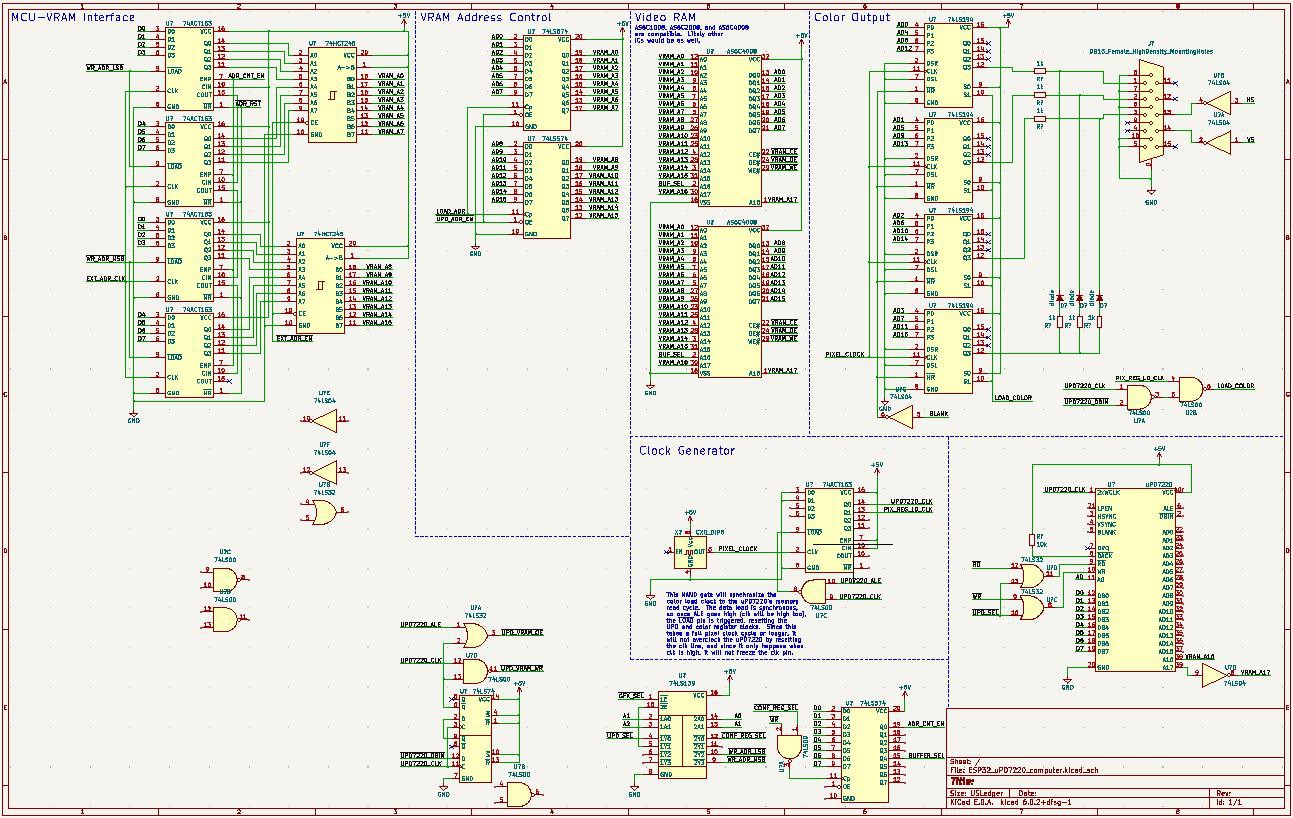 Hopefully my schematics are prettier and more useful this time; I think they will...
Hopefully my schematics are prettier and more useful this time; I think they will...









 Howard Jones
Howard Jones
 Dave Collins
Dave Collins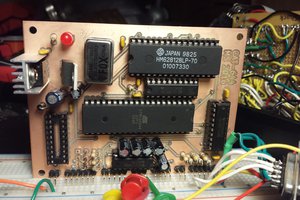
 Mars
Mars
I love this stuff. I was looking at the Intel clone of this and was hoping someone would work on a board. It would be great to connect to a retro 65816 CPU system as a period correct design. Thanks for sharing.